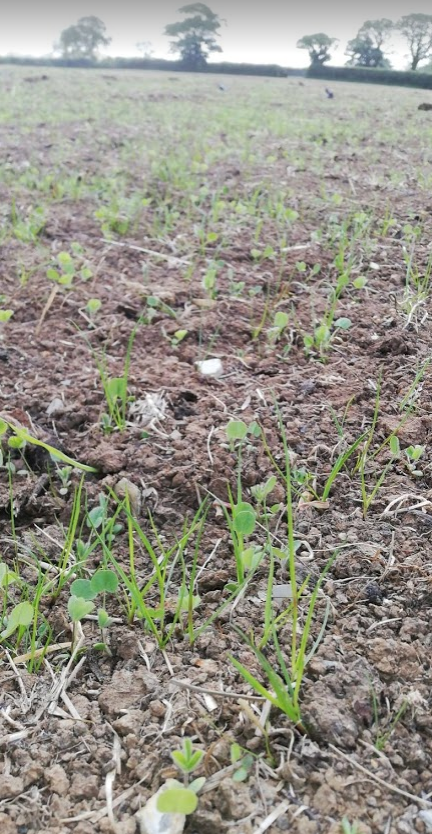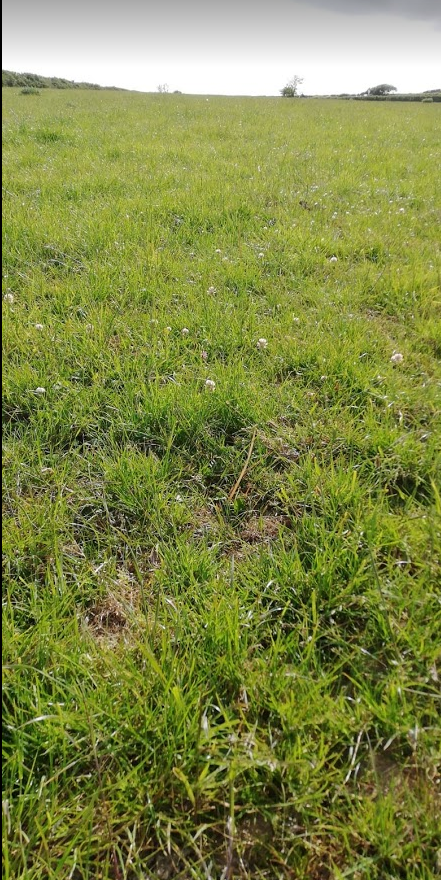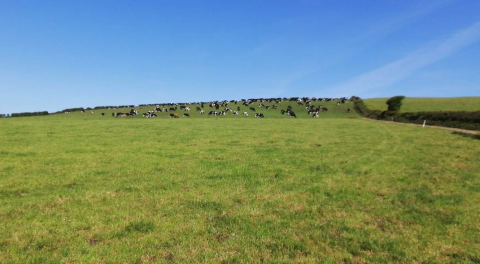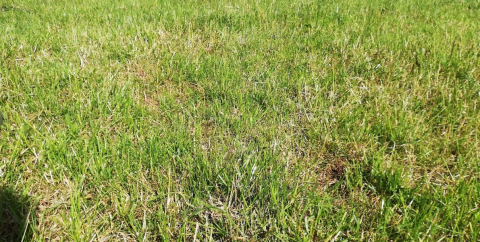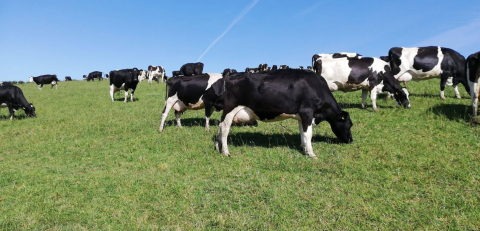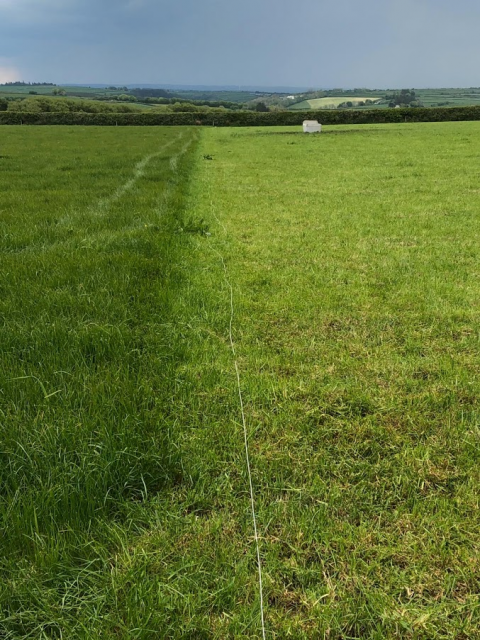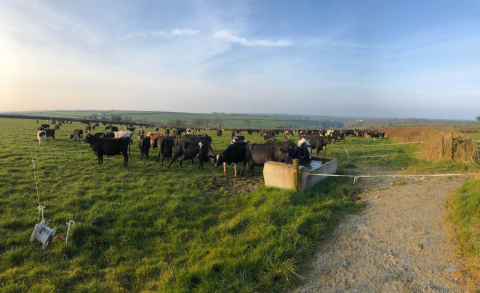1 June 2020
The recent prolonged spell of dry weather has led to some of Farming Connect’s Dairy demonstration sites needing to adjust their feeding and silage making regime to cope with low soil moisture levels.
Grass growth rates in many parts of Wales have dropped significantly in the last month and according to GrassCheck GB project data for dairy farms in Wales, growth at the end of May reduced by 30% from the start of the month which will impact subsequent grazing and silage making. With the warm weather set to continue, milk yield could be impacted. Here are some examples of how some of the dairy demonstration sites are trying to implement strategies to cope with an early drought.
Mountjoy, Treffgarne, Pembrokeshire
William Hannah who farms at Mountjoy has had to manage his herd of 370 spring calving cows through a dry May that is more often associated with July.
Currently the amount of concentrate fed during the dry spell has been increased by 1.5kg to 4.5kgDM/head/day along with additional silage offered at 3kgDM/head/day. Normally, the cows total daily demand of 18kgDM/cow would be met by grass and concentrate in the parlour, however, a quarter of the 90 bales made from 30 acres in early May has already been fed to the herd.
Luckily, the Hannah’s additional newly rented ground which joins the existing farm, has now come into the rotation and will offer good quality grazing and lengthen the grazing cycle. Soil is dry up to 12 inches at Mountjoy, with some spring re-seeds struggling to establish.
“It’s drying up here at the moment and we have stepped up the silage to buy us some time. Grass growth is now down in the low thirties and being outstripped by demand,” explains Will.
Despite the dry conditions, the additional concentrate fed has allowed the fresh spring calved cow to respond with higher levels of milk yield than previous years.
“Cows are milking well, averaging 27 litres at over 2kg of milk solids/cow/day” adds Will.
Access to water during extreme dry periods has been an issue for Mountjoy in the past. Fortunately, a second borehole is due to be installed, ensuring plentiful supply of drinking water for the herd.
“The drought of 2018 caused issues with water pressure and supply on occasions. Hopefully a second borehole will help resolve this,”explained Will.
Figure 1. “Reseeds coming along slowly but red clover looking strong in this one.” (William Hannah, 24/05/20)
Figure 2. “20 days growth with seed heads popping up as the plants stressed from the dry conditions. Cover at 2,300 kgDM/ha.” (William Hannah, 26/05/20)
“Looking hot today. This one of our last remaining covers around 3,000 kgDM/ha so will try not to graze it too tight, so there’s a little left to protect the field as it’s on thin soils on higher ground.” (William Hannah, 27/05/20)
“Grazed 56 days ago, it has grown a bit but there is a fair amount of stem in the base now.” (William Hannah, 27/05/20)
“There is a fair amount of stem in this ley. It's a more drought resistant mix with more Timothy and Festolium. It does head earlier, but produces more dry matter in these conditions than the previous ley.” (William Hannah, 27/05/20)
Erw Fawr, Holyhead, Anglesey
Ceredig Evans from Erw Fawr has had slightly more rain than most parts of Wales. Ceredig has been measuring grass weekly and inputting results into AgriNet to check growth rate against herd demand.
Fortunately, grass growth rates are still sufficient, however, Ceredig is mowing grass ahead of the cows to graze as the sward is going to head sooner than normal. This will avoid selective grazing and ensure subsequent regrowth is of good quality.
“If need be, I can be flexible with my group of low yielding cows grazing, increasing average farm cover by letting grass go to the full 3 leaf stage and beyond followed by pre mowing or by drying cows off earlier to reduce grass demand,” said Ceredig.
Nantglas Farm, Talog, Carmarthenshire
Iwan Francis manages a 200 cow split block calving herd averaging at 30litres/cow/day on 3kgDM concentrate and grass, and has had a challenging start to the year as have all farmers, due to the drought situation we are now experiencing.
After turning the cows out later than expected coming off the back of a very wet winter, the grass utilisation and management in the dry conditions proved less of a challenge than in other years. The dry spring allowed good field conditions and cows were cleaning grass leys well, explains Nigel Howells, an independent consultant working with Iwan on utilising grass.
Grass growth on 23 May was only 45kgDM/ha compared to his demand growth of 61kgDM/ha, which is relatively low in comparison to the 67kgDM/ha growth achieved in May 2019.
Iwan has taken a few steps to manage the situation.
“We are drying off 10 autumn calving cows early due to their low yields, with the aim to dry off another 20 over the next couple of weeks, depending on their body condition and calving date/yield,” said Iwan.
This will reduce demand on the grazing area and will reduce the demand on growth to match grass growth achieved on the farm Nigel Howells explains.
Iwan has also increased feed levels by 2kgDM and 1.5kgDM for the spring and autumn calvers respectively, in order to replace the grass and reduce demand on the grazing area. These actions will hopefully result in the following:
- Reduce demand on grazing area
- Balance grass growth to demand
- Maintain sufficient average farm cover
- Avoid feeding other forage
- Sustain cow performance and fertility
Nantglas grass ley, 10/05/20
Nantglas, May 2020

